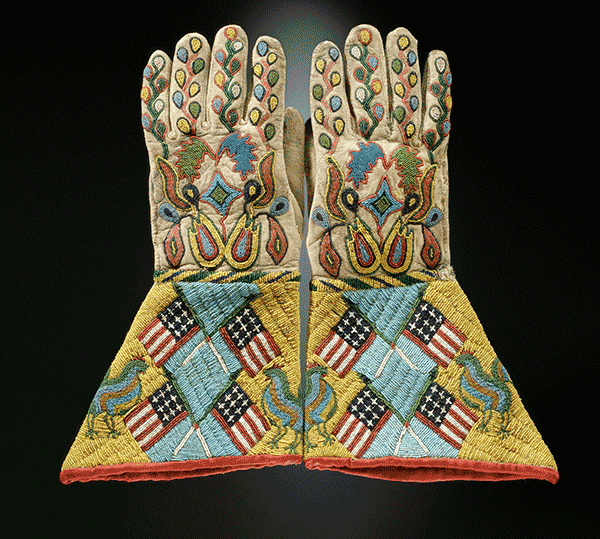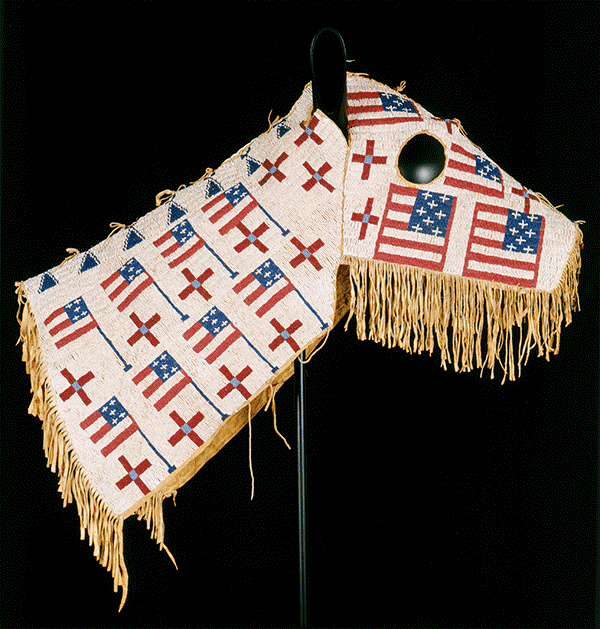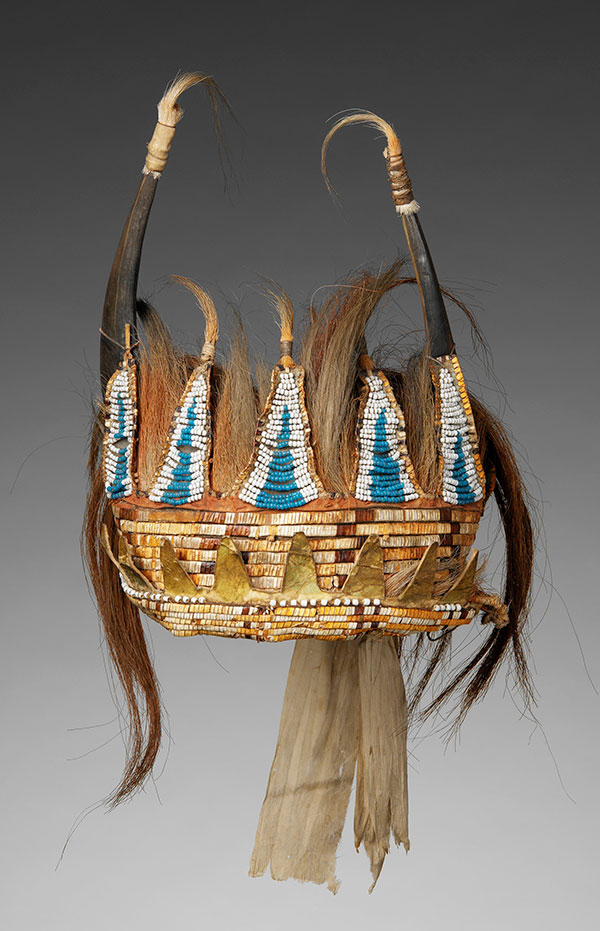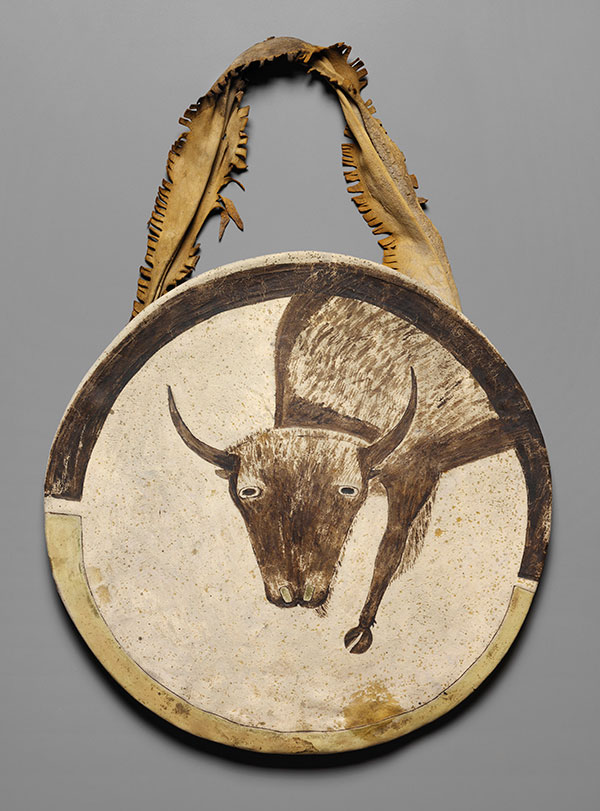The Plains Indians: Artists of Earth and Sky

Gauntlets, c. 1890. Sioux-Métis artist, North or South Dakota. Native tanned leather, glass and brass beads, cotton cloth. United States, Hirschfield Family Collection, Courtesy of Berte and Alan Hirschfield Photo: Hirschfield Family Collection, courtesy of Berte and Alan Hirschfield/ W. Garth Dowling
‘The Plains Indians: Artists of Earth and Sky’, a current exhibition at the Metropolitan Museum of Art, showcases the power and continuity of the art of Native American people of the Plains region.
Ranging in date from pre-contact to contemporary, the exhibition highlights the objects of many nations including Osage, Cheyenne, Lakota, Blackfeet and Pawnee across a variety of media.
‘The Plains Indians’ is organised in collaboration with the Musée du quai Branly, Paris, bringing together works from European and North American collections. Thus, pieces collected by French traders several hundred years ago sit alongside objects obtained during the Lewis and Clark expedition of 1804-1806, early reservation period works and installations by contemporary artists. The exhibits combine aesthetic appeal with spiritual significance and trace the story of the Plains Indians over four centuries.

Robe with Mythic Bird, c. 1700 – 1740. Eastern Plains artist, probably Illinois, Mid-Mississippi River basin. Native tanned leather, pigment. Paris (France), musée du quai Branly. Photo: Musée du quai Branly/Thierry Ollivier, Michel Urtado
Thomas P. Campbell, Director and CEO of the Metropolitan Museum, said: “Through outstanding works of art from the Plains region, this ambitious exhibition demonstrates the long history of change and creative adaptation that characterizes Native American art. It is an important opportunity to highlight the artistic traditions that are indigenous to North America and to present them in the context of the Met’s global collections.”
Reflecting a history of survival and adaptation, the artistic works engage with themes of loss, perseverance and renewal of traditions. While materially rich with a wealth of shell, antler, porcupine-quill, glass-bead embroidery and feather work, many objects also reveal profound connections with the natural and spirit worlds.
Metropolitan Museum of Art, until 10 May 2015

Horse Mask, c. 1900. Lakota (Teton Sioux) artist, North or South Dakota. Native tanned leather, glass beads. Cooperstown (New York), Fenimore Art Museum, The Thaw Collection, gift of Eugene V. and Clare E. Thaw Photo: New York State Historical Association, Fenimore Art Museum,The Thaw Collection

Woman’s Dress, c. 1900. Dakota (Eastern Sioux), Yanktonai or Lakota (Teton Sioux) artist, Fort Peck Reservation (Montana). Native tanned leather, glass, brass and steel-cut beads, metal cones, horsehair. Washington (District of Columbia), Smithsonian Institution, National Museum of Natural History, Department of Anthropology. Photo: National Museum of Natural History, Smithsonian Institution, Department of Anthropology

Horned Headdress, c. 1780. Eastern Plains artists, Lower Missouri River Region. Split bison horns, sinew, horsehair, deer hair, porcupine quills, glass beads, wood, metal cones, cotton cloth, rawhide, birch bark (?), silk ribbon, pigment. Paris (France), musée du quai Branly Photo: Musée du quai Branly/Patrick Gries, Bruno Descoings
























Comments [0] Sign in to comment